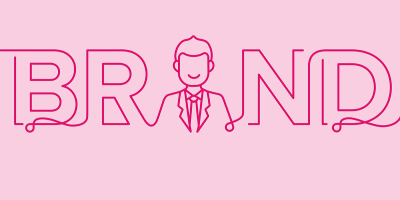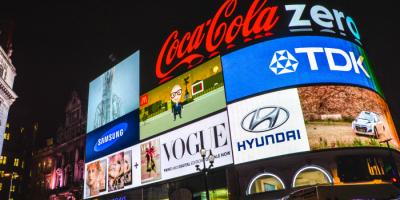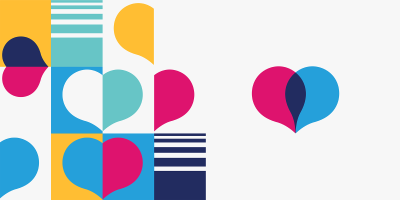Brand Association: Definition, Advantages, and Examples

Nate Holmes
Sr. Manager, Product Marketing
One of the biggest psychological influences on customer behavior is brand association. This can be the silent difference between someone buying your product or a competitor’s. It’s a complex phenomenon that every brand wants to establish in the minds of their audience but few understand how to create.
What brand comes to mind when you think of Bill Gates? Jeff Bezos? Arianna Huffington? Microsoft. Amazon. Huffington Post. How does that work?
Let’s start by establishing a solid definition of what brand association is. Then, we’ll go into the different kinds of brand associations, some specific examples, and direct you toward getting started on your own brand association strategy.
What is brand association?
| Brand association is a mental connection a customer makes between your brand and a concept, image, emotion, experience, person, interest, or activity. This association can be immediately positive or negative and it heavily influences purchase decisions. |
These associations form over time through consistent brand experiences and in big moments like culture-shifting movies, Super Bowl ads, and hit songs. Celebrities can generate brand associations through their platforms, as well, that can have immediate positive or negative impacts.
Brands want to create positive associations and ideally, brand associations are simple, positive, and immediate. For example, when you think of electric cars you likely think of Tesla. Family movies? Disney or Pixar. Athletic shoes? Nike is one of the first that comes to mind. A brand association is one word, image, or concept that comes to mind quickly and they’re important for every company to cultivate.
Importance of brand association
Brand associations are important because they help customers recall your brand right away. They combine to make up your overall brand identity and you want to create them in as many meaningful ways as you can. Usually, the words associated with your brand help people make the connections to your product or category without needing to explicitly tell your audience what it is you do or sell.
At their best, brand associations differentiate you from your competitors and create a positive image for your brand that makes people want to buy your products. Getting your team focused on creating associations starts with understanding the different types of associations that can be made.
Types of brand association
There are many types and combinations of brand associations but it’s helpful to focus on a few that are recognizable, influential, and achievable. Here’s a shortlist of the most familiar types that you can create.
- Celebrity-based (e.g., Jay-Z and TIDAL music streaming)
- Founder-based (e.g., Arianna Huffington and Huffington Post)
- Character-based (e.g., Geico’s gecko)
- Word or tagline association (e.g., Nike’s “Just do it” tagline)
- Activity-based (e.g., The North Face and adventure activities)
- Luxury-based (e.g., Rolex watches)
- Customer-service-based (e.g., Zappos)
To create any of these, you need to start with a solid brand identity as a foundation for a consistent experience. The team committed to managing your brand can look for opportunities to capitalize on peak moments and create powerful connections. Here are some of the most well-known examples of brand associations.
Brand association examples
The most powerful brand associations only take an instant to trigger a person’s recognition of your brand. Let’s look at Nike as our first example. When you see their iconic swoosh logo anywhere, you’re reminded of them immediately. If you hear the words “Just Do It,” you’re likely to think of their name first. Need new shoes for running or basketball? Chances are, Nike is one of the first websites you visit. This is the kind of brand association everyone wants but doesn’t develop overnight.
Disney took most of a century to become a household name in family movies, fantasy, and imagination. They did this through establishing familiar characters, years of consistent film releases, and creating bigger-than-life experiences at Disney World and Disneyland. From Mickey Mouse and Fantasia to Elsa and Frozen, Disney has used the power of character-based brand associations to build their brand identity.
When you think of chocolate, who do you think of? Willy Wonka? Hershey’s? These are two of the most inevitable brands that come to mind. Very few people think of cacao trees — where chocolate actually comes from — and in many ways, that’s thanks to the power of Hershey’s brand. Their chocolate has a whole town lined with Hershey Kiss street lights and an amusement park behind it, “The Sweetest Place on Earth.”
But you don’t have to establish an iconic brand like Nike, make movies for a century, or build whole towns to create brand associations of your own. In fact, with the omnichannel customer experience that’s even more possible to do today in our ever-increasingly digital world. Now, brands have the chance to create strong connections quickly, you just need to make sure you have the right tools to help along the way.
Create your brand association strategy today
You want to build brand associations that are simple, positive, and immediate. If someone thinks of a need related to your product, you want them to think of you first. With that kind of positive brand association customers are more likely to seek out and buy your product. Easy to say, a bit more complicated to achieve.
Start by creating a strong foundation for your brand, develop brand guidelines, and manage your brand closely. Customers will start to form associations from the interactions with your company. And with a savvy digital team managing your brand, you can capitalize on big moments to create long-lasting connections.
Request, watch, or click through a demo to explore our brand management solution and to see how Acquia DAM (Widen) can help you take control of your narrative to start creating positive brand associations today.

Note: This article was originally published on Widen.com.


